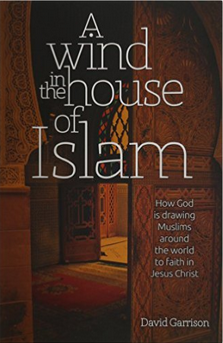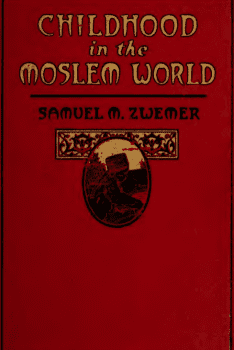Christian Heritage and the Rise of Islam in Somalia
Prior to the rise of Islam, Somalis adhered to an ancient religion known as Ebbe Waaq, a complex polytheistic belief system. However, strong evidence also suggests pre-Islamic monotheism in the region, such as the Yibr clan who claim direct lineage from the Hebrews who migrated out of Egypt during the Exodus. Very early Arab sources indicate a Christian presence in Somalia beginning in the 10th century, describing the port city of Saylac as a Christian city with a small minority of Muslim Yemeni merchants who lived peaceably with their Christian neighbors.
Ben Aram documents further evidence of pre-Islamic Christian presence among the Somali people in a fascinating account of St. Francis of Xavier’s visit to the island of Socotra, off the coasts of Somalia and Yemen. “In a letter dated 20 September 1542, he wrote to the Jesuit headquarters in Rome about his encounters with the inhabitants of that island. They claimed to be converts of St. Thomas and seemed to be totally illiterate and without any Scriptures. Their “priests” were also illiterate but were able to do their daily prayers from memory, despite the fact that they were in a language they did not understand. They had totally forgotten the sacrament of baptism but had Lenten fasts… St. Xavier remarked several times how proud the Soqotrans were of being Christian.”
Apart from written evidence, Aram notes that archeologists have discovered ruins of Somali tombs that are marked with crosses. He makes a solid argument that on the basis of these written records, archaeological data and Judeo-Christian symbolism still active in traditional Somali culture, “both Judaism and Christianity preceded Islam to the lowland Horn of Africa.” Furthermore, Aweis Ali’s extensive work on Christian history among the Somali people has led to the conclusion that “For many people, “Somali” and “Christian” are oxymoron, but history is littered with enough evidence that this assumed oxymoron is one big fallacy.”
The idea that Christianity is the white man’s religion exported to Africa recently is a vast misconception that is deeply detrimental to missionary efforts across the continent. Africans must recognize that “the Christian presence in Africa is almost as old as Christianity itself.” Such is true among the Somali as well stripping the argument “to be Somali is to be Muslim” of its validity. It is speculated that Christianity remained in Somalia as late as 1500 until Islam overtook and became the religion of the nation.
Rise of Islam
Despite this fascinating history, the fact remains that today Somalia is nearly 100% Sunni Muslim. Ali Abdirahman’s extensive work on the Islamization of Somalia sheds light on the factors causing Islam to gain such extensive ground. The first notable element is the prevalence of itinerant, traveling missionaries. There was no formal, organized missionary effort within Islam at the time, so Islam was propagated to the Somalis primarily by Muslim merchants. This is significant because it made Islam accessible to people everywhere—wherever the merchant traveled, his message went with him.
The second major factor in the Islamization of the Somalis was power encounters. There are numerous, nearly identical stories proceeding from several corners of the Cushitic world of Sheikh Yusuf’s interaction with a pagan magician (see Sharif Yusuf Barkhadle: The Blessed Saint of Somaliland). This prolific legend tells of the two men going head to head to prove who had true power from on high. The magician performed a miraculous feat of passing through a mountain without either tunnel or door. On his third pass through the mountain, Sheikh Yusuf called down power from Allah and trapped his enemy inside the mountain for the rest of eternity. This miraculous demonstration of power was a significant factor in the mass conversion to Islam.
In addition to itinerant preachers and power encounters, it is notable that the bulk of Islamic missionary work among Somalis was done by Somalis themselves. Ali Hersi notes that after Islam’s initial entrance, many young Somalis began to travel to North Africa and Yemen for education. Upon their return, they went about as nomadic priests and missionaries. This is significant because it indicates that the people took early ownership of Islam as their own and thus took up the mantle of propagating the faith among their own people. It was not viewed as a foreign religion, and Somalis themselves felt responsible to proclaim the message to their brethren.
Lastly, these indigenous, itinerant missionaries displayed great persistence in the work of spreading Islam to the furthest reaches of Somali territory. The Islamization of the Somali people was a “long, slow process spanning a period of seven centuries.” Muslim missionary efforts in Somalia did not cease until inhabitants of every village, town, and nomadic camp could be called true Muslims. This shows that the baton of missionary work was passed successfully from generation to generation, older missionaries training younger ones and effectively keeping the fire burning even as centuries slid by. Hersi also notes that it was not until the 15th and 16th centuries that military force became a factor in the conversion of the Somali people. Prior to the conflict with Abyssinian (Ethiopian) Christians, Islam’s advent in the Horn of Africa was very peaceful. When the conflict began, Somalia received aid from their Muslim brothers in Yemen, an event that solidified their Muslim identity, their ties with the Arab world, and their fierce opposition to Christianity. This indicates that, unlike some other Muslim nations, the Somali people accepted Islam voluntarily and were not the product of forced conversions.
THE RISE OF SUFISM
A few takeaways can be derived from the spread of the Qadiriyya Sufi order by Sheikh Uways Bin Muhammed Al Bawari. Uways’ influence was so vast due in part to the fact that he considered his movement to be ‘pan Muslim’ and thus attracted followers from every walk of life. His primary modes of disseminating his message were itinerant traveling/preaching, through which he gained a massive following and widespread respect, and his prolific poetry. Many people heard the message of the Qadiriyya through his edited compilation of poetry, which included poems from the order’s leaders connected to simple lessons, stories of miracles and power encounters, and hadiths of the Prophet. This compilation was meant to instruct the masses and was designed to be recited to illiterate populations. The significance of this is that Uways made his teachings accessible to the masses—not just the learned elite, but to all people everywhere, regardless of education or status.
The Sufis gained ground rapidly in Somalia because of their unilateral devotion to Allah and passion for preaching his word. However, this mystical, ascetic, typically (though not exclusively) non-violent branch of Islam in Somalia has been obscured by the rise of the Al-Qaeda backed terrorist organization Al-Shabaab. The emergence of Al-Shabaab led to a shift in the larger Somali expression of Islam due to Al-Shabaab’s zero-tolerance policy for religious minorities. Among those minorities, or kafir (infidels), are both Christians and Sufis; making both groups valid targets for attack.
Thus the arc of religious history among the Somali people emerges—ancient Somali peoples perceived the invisible attributes of God, his “divine nature and eternal power” as displayed through the things He has made (Romans 1:20) and responded by developing the Ebbe Waaq system of worship. Then, very early in Somalia’s history, perhaps as early as the Hebrew Exodus, the revelation of the one true living God, YHWH, made its way to the Horn of Africa. Later on, the gospel of this God become flesh in the person of Jesus Christ reached Cushitic peoples, and established a foothold in the region as evidenced by early archeological findings. However, in these early years, Islam also became a powerful force that swept through the Arabian Peninsula and made its way across the Red Sea to the Horn of Africa, perhaps as early as the Prophet Mohammed’s first Hijrah (migration) from Mecca to Medina in 622 CE.
Rise and Fall of Modern Christian Missions
The history of Christian missions among the Somali people after the widespread takeover of Islam begins in full force in 1881 when the Roman Catholic Church opened an orphanage near Berbera. This Catholic Mission remained in the region for many decades and produced a number of vibrant disciples of Christ. Other notable missionary efforts include the Swedish Overseas Lutheran Church, which arrived in the southern town of Kismayo in 1896, the Mennonite Mission, which set up efforts in Mogadishu in 1953, and the Sudan Interior Mission, which entered Somalia the following year. All of these organizations were eventually kicked out of the country but continued their efforts to reach Somalis from nearby Kenya and Ethiopia. A number of missionaries during this time frame were martyred for their witness of Jesus Christ, to the point where it was speculated in the early 20th century that there were more missionary graves in Somalia than there were missionaries. Aweis Ali calls these four organizations the “Magnificent Four” and states that “the progress of the Somali Church is directly linked to the missionary work of the Magnificent Four.”
Missionary efforts in Somalia came skidding to a halt in 1991 when the Somali government collapsed and initiated a decades-long civil war from which the nation is still recovering. While all Somalis have suffered, particularly Christians have paid with their lives because of Jihad. Persecution of Christians escalated again in 2009 when Somalia adopted Sharia law. Under Sharia, apostasy is punishable by death. The political instability of Somalia combined with the religious fervor of the militant group Al-Shabaab makes Somalia one of the most dangerous countries in the world to be a Christian, let alone a missionary.
Why was Islam so effective in their missionary efforts in Somalia while Christianity died out? Why did Christianity not take permanent root among the Somalis? The fact that there are only several hundred known Christians in Somalia today indicates that Christian missions have largely been unsuccessful.
Reaching the Somali People
Drawing on the spread of Islam in Somalia, there are three major components of an effective plan to bring the Somali people back to their Christian heritage. The first and most important is raising up and sending out indigenous laborers. This is likely why Islam was so successful in its takeover of Somalia, very early on the role of the missionary was passed from foreigners to Somalis themselves. An effective mission endeavor among the Somali people will have indigenous, Somali believers at its core. Somali believers from across the world should be mobilized to pray, give, and go—joining together to intercede with fervency and purpose, supporting financially those who go, and raising up an army of Spirit empowered and fearless ones who will take the gospel to their own people, overcoming by the blood of the Lamb and the word of their testimony, loving not their lives even unto death (Revelation 12:11).
The anointing and power of the Holy Spirit is the second crucial element in reaching the Somali people with the gospel. Stories of miracles and power encounters were central to the advent of Islam in Somalia, it is only human nature to pledge allegiance to the power that has demonstrated itself as ultimate. It is high time that the name of Jesus be clearly demonstrated as the name that is above every other name. The Somali people need a witness that will not shy back from power encounters. For far too long Christian missions among the Somalis have taken place in secret—although the repercussions will be substantial, the gospel will not go forth in power until it is brought out from under the proverbial basket and allowed to shine its light unto all men (Matthew 5:15). Laborers among the Somali people must be filled with the Holy Spirit and ready to engage in power encounters, combatting the power of the evil one with the light, love, and truth of Jesus, no matter the cost.
The final essential element of an effective plan to reach the Somali people with the gospel is a means of presenting the gospel message that is accessible and contextual. In the same way that Sheikh Uways propagated the message of the Qadiriyya order through poetry that was accessible to the masses, the vehicle of Discovery Bible Study is a powerful tool for communicating the truth of the gospel in narrative form. It can be done by anyone, anywhere, and at any time. It does not require programs, funding or equipment. It is simple enough for a child and complex enough for a Sheikh. It is malleable and flexible, it can be done in a living room or a coffee shop; with one person or twenty, with the wealthy and influential or with street children and beggars. Muslims are very open to Discovery Bible Study when they are confronted with the fact that they themselves claim to believe in four holy books—the Taurat (Torah), Zabur (Psalms), Injil (Gospels), and the Quran. Yet when asked, hardly any Muslims have ever read these “former books” as the Quran calls them (Sura 4:136). The Quran instructs Muslims to read and obey the “former Scriptures.” How can they claim to obey something they have not read? This simple realization is more than sufficient to invite most Muslims to read the Prophet’s Stories together.
A successful mission endeavor among the Somali people does not require extravagant programs, productions, funding, stadiums, or strategies. It simply requires a few faithful laborers who are willing to put their hand to the plow and not look back. Statistically, the only way to finish the task of the Great Commission is by the slow, seemingly small work of person-to-person discipleship—this method actually multiplies exponentially over time and is, in the long run, far more successful than mass evangelism. It seems foolish from the outside, but thankfully we serve a God who loves to use the foolish, weak things of the world to shame the strong (1 Cor 1:27).
Works Cited
Islamic History Institute, “The History of Pre-Islamic Somalia.”
Aram, Ben I. “Somalia’s Judeo Christian Heritage.”
Ali, Aweis A. “A Brief History of Christian Missions in Somalia.”
Bowers, Paul. “Nubian Christianity: The Neglected Heritage.”
Hersi, Ali “The Arab Factor in Somali History.”
Lewis, I.M. “Sharif Yusuf Barkhadle: The Blessed Saint of Somaliland,” 75.




